|
Khai Silk has become the ultimate Vietnamese luxury brand. The shop assistants of Khai's fancy outlets are effectively marketing his famous blend of traditional Vietnamese costumes with 21st century elegance. I had to buy the hat in return for taking the picture.
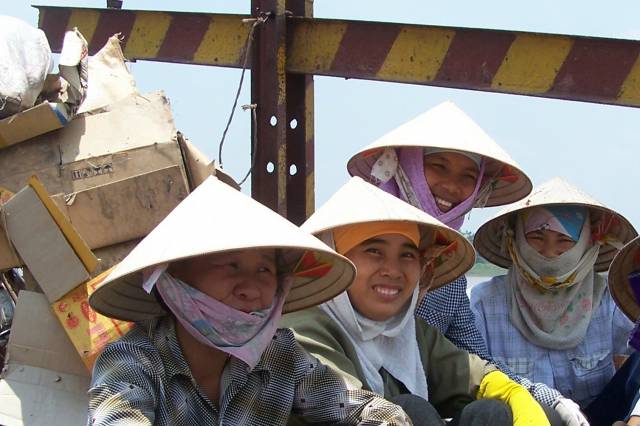
One Sunday morning, I met these four women on a barge, crossing the Da river, only a few kilometers from Ha Noi but in a different world of absolute poverty. We joked a lot 'troi lanh qua, lan qua' about the 'cold weather' - it was a stifling 39 degrees Celcius with no shade in sight. These women make 60 cents a day from collecting garbage, but a happy grin is still affordable. And no - these women are not muslims. They cover their skin to protect their faces, when walking in the sun 10 hours a day.
THE MANY FACES OF VIET NAM
Nguoi Viet Nam - Vietnam's people - have always fascinated me. Some because of the way they look, and many of them because of the story behind. There are 84 million people in Viet Nam, and I have captured a few of them in the photos on this page.
Some are very famous and admired throughout the country. Some of them are friends, and some just caught my attention, when they popped out of this vast ocean of faces.
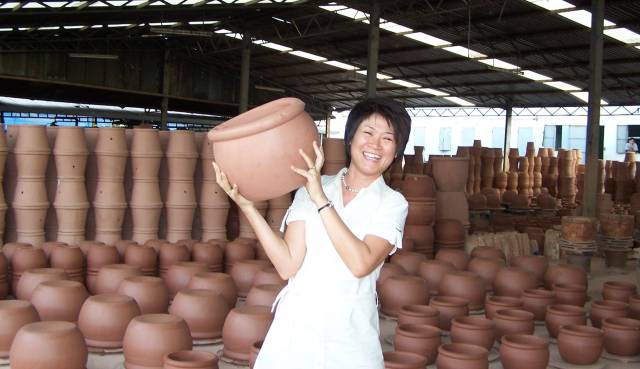
Bich Lehn is one of modern Viet Nam's very capable businesswomen. Together with her Danish husband Carsten Lehn she has developed Tropicdane, a very successful furniture and ceramics company in Binh Duong province, one hours drive from Ho Chi Minh City. Tropicdane is exporting to some 30 countries around the world from three factories in Viet Nam.
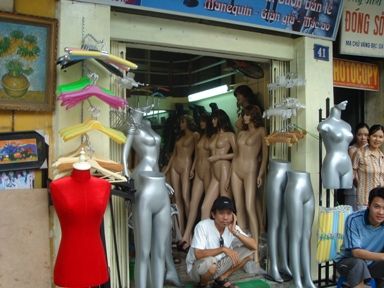
Business and profits are a lot more modest for Hiep, who sells mannequin dolls to Ha Noi's numerous retail shops. He does own a fancy mobile, costing as much as three months wages of the workers in the garment industry.
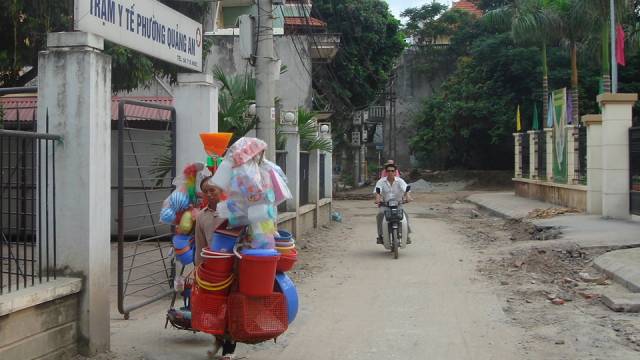
Thousands of people from the poorer rural villages come to the cities to earn a few dollars a day selling cheap goods to the more affluent Vietnamese.
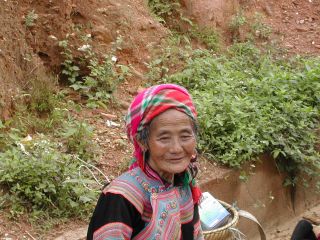 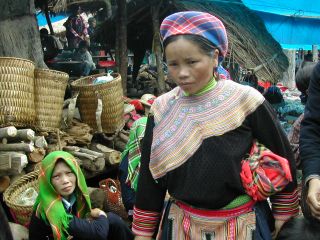
The Hmongs are by far the biggest group among the approximately 50 different minorities living in Viet Nam. The poverty rate among the ethnic minorities is far higher than among the Vietnamese. They mostly live in isolated, mountainous areas in northern and central Vietnam.
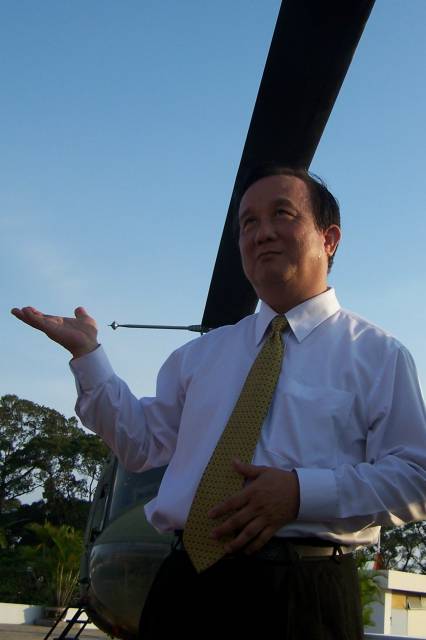
The Vice President of Viet Nam Airlines, Nguyen Thanh Trung is a great storyteller. And he has a great story to tell. During the war Trung spent a decade as a 'sleeper' in the air force of South Viet Nam.
I April 1975 he was given his assignment by the communist military leadership. He was to break out of his fighter bomber squad and bomb the presidential palace in Saigon.
His mission was successful. The attack created total panic, and president Thieu fled to London the next day.Trung miraculously survived the suicidal mission and landed his plane at a guerilla base in the jungle at the Cambodian border.
He told me his story on the roof of the presidential palace almost 30 years later. His courage was based on the anger against the regime that killed his father, when Trung was 12 years old.
Trung is still an active pilot on VIP-flights. He flew the Vietnamese Prime Minister to Washington on the first official visit ever of a Vietnamese Head of State to the U.S. in 2006.
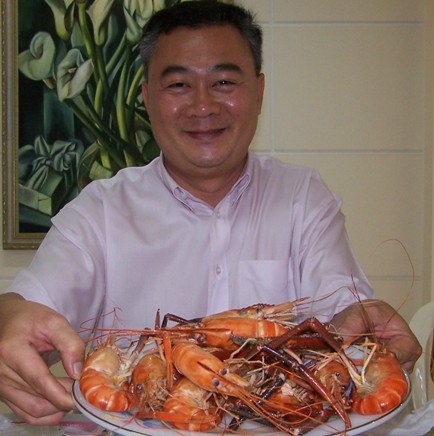
Pham Hoang Kinh is a lover of food - and a very good friend of mine in Ho Chi Minh City. We worked together for 4 years during my term at the Danish embassy.
No one can kill a lunch table like Kinh - maybe because of the incredible hardships he and his family went through in the difficult years after the 'American War'.
Kinh was 18, when his father was sent for 're-education'. As the oldest son he took over the responsibility for 6 younger brothers and sisters. They survived on diet of rice shells and flour mixed with boiling water.
Postwar times were equally hard in the impoverished North, where meat was rationed to 100 grams per month per person.
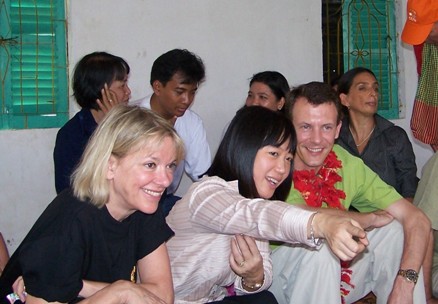
Bach Lan Phuong (center) is yet another admirable Vietnamese woman that I had the privilege to work with at the Danish Embassy in Ha Noi.
Her voice can change in seconds from birdsong to utter impatience, when Nguoi Nouc Ngoai (foreigners) are just too insensitive to Vietnamese experience. One such occasion was, when I took her for a Sushi treat at the beautifully preserved colonial Metropole Hotel in Ha Noi.
Seeing me chewing away on delicious ginger, she said in disgust: "I never eat ginger. During the war we were not allowed to slaughter live animals. My mother used ginger to cover the taste of animals that had died from disease".
On the photo Phuong is displaying her excellent skills as a guide to HRH Prince Joachim and the chairwoman of Care Denmark, Gunhild Skovgaard. Nowadays Phuong is also showing her less than excellent skills, driving her own car as one of the very first women in Ha Noi.
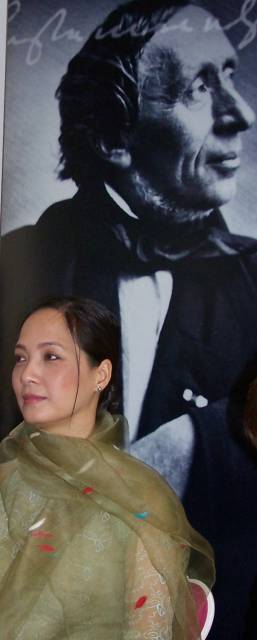
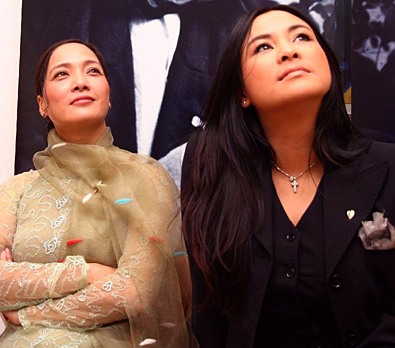
Singer Thanh Lam (below) has a voice that few can match, and she is one Viet Nam's most admired artists. The same goes for actress Le Khanh (left). In 2005 both of them were appointed goodwill ambassadors in celebration of 200th birthday of the Danish fairytale teller H.C. Andersen. During a reception at the Danish Embassy, they posed for a little photo session - one of my better days in Viet Nam.

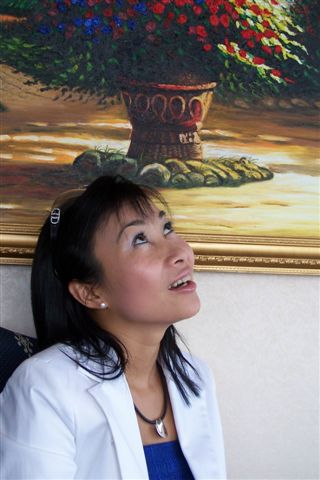
Hana Dang got a very good idea a couple of years back. She put up some of the first road side billboards along the highway from Ha Noi to Noi Bai International airport. Today rumor has it that Hana owns at least half of the dozens of billboards through her high profile Goldsun company, renting them out for very high prices to foreign and domestic investors.
She calls herself a capitalist communist. When she goes out to Viet Nams most expensive restaurants with old friends like me, she likes to pay the bill - Hana's got a nice way of showing off these days.

A far cry from the growing wealth in Ha Noi and Ho Chi Minh City poverty still prevails. The government of Viet Nam rightfully gets a lot of credit for having lifted more than 50 million people out of absolute poverty in just 10 years. But millions are still living on just one dollar a day, or even less. Exactly how hard life can be, is clearly demonstrated in these faces below from Nghe An in the North and the Mekong Delta in the deep South.
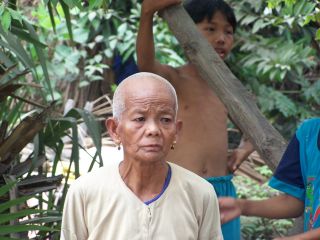 
Viet Nam's many faces
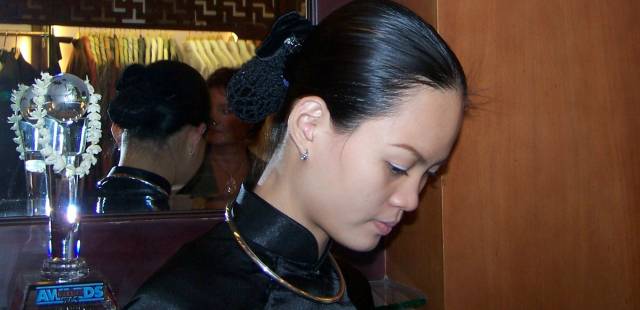
|